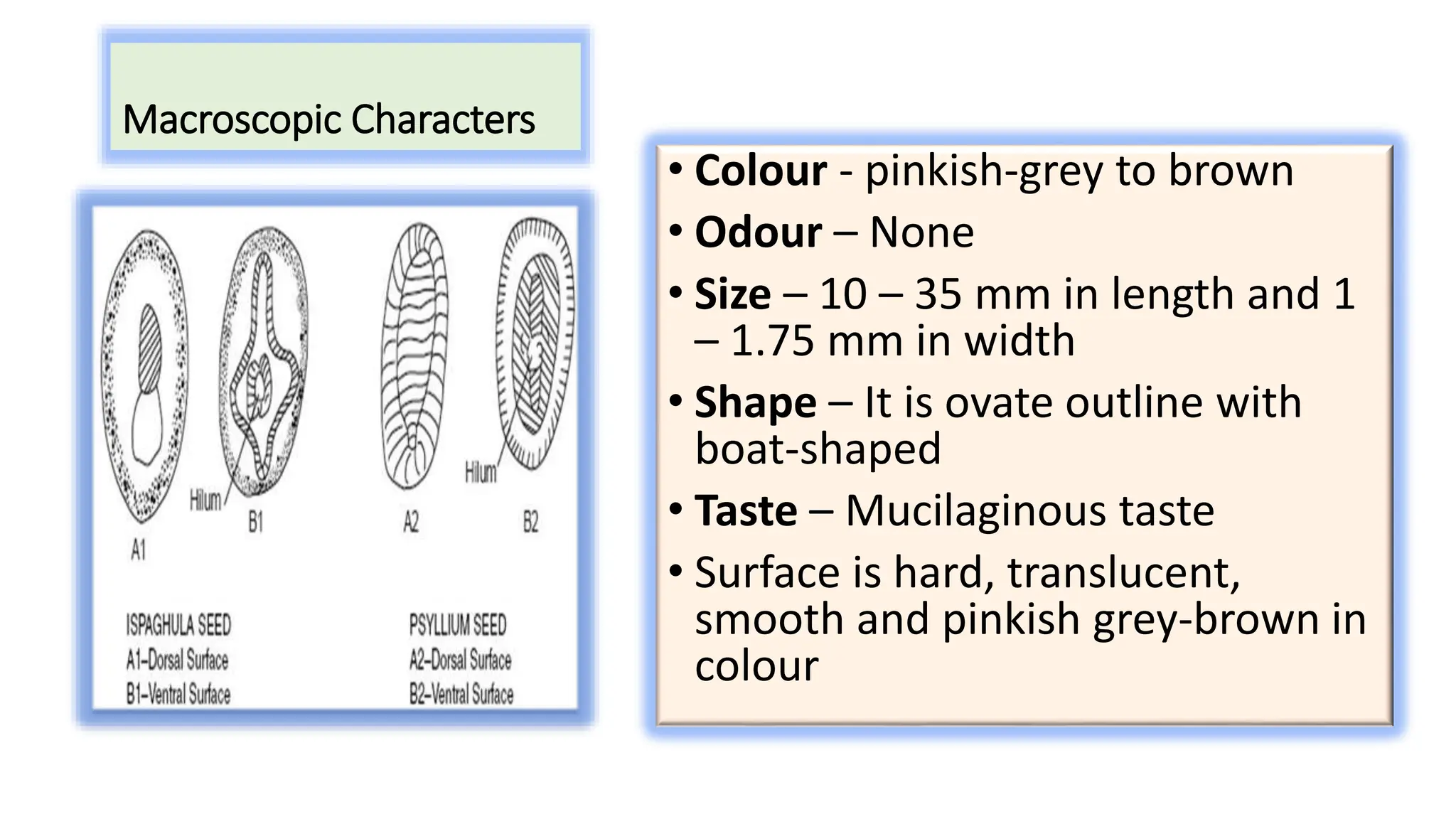This document provides information about the plant sources, cultivation, collection, macroscopic and microscopic characteristics, and key chemical constituents of 5 substances: Cinnamon bark, Cinchona bark, Isabgol seeds, Nux Vomica seeds. It describes where the plants are grown, how the substances are collected from the plants, their visual features, tissue structures seen under microscope, and active chemical components like alkaloids, oils, and acids in each one.



























